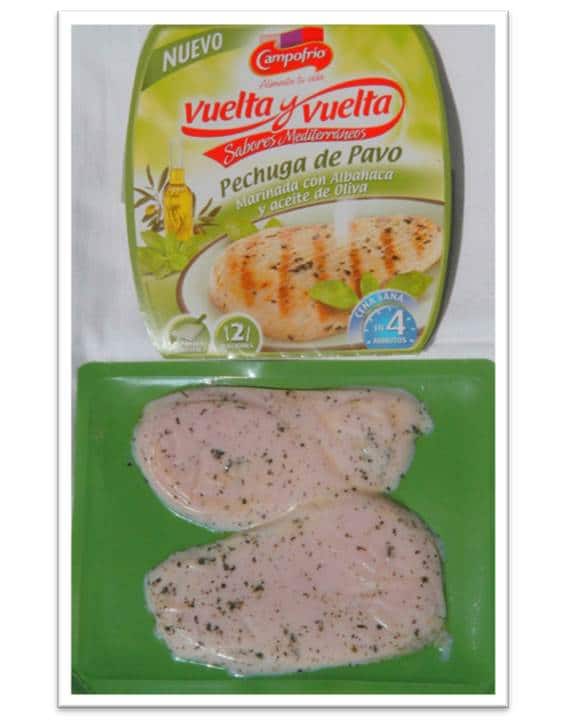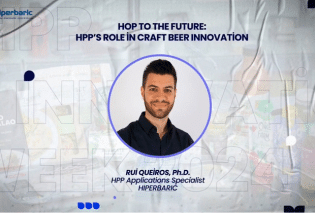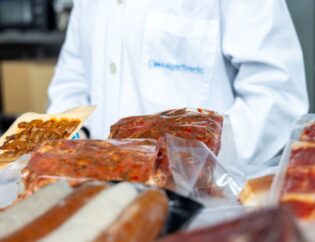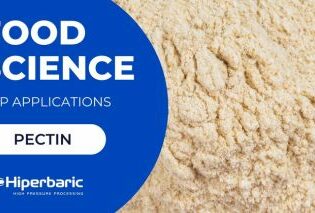One of the questions most commly asked by fresh protein processors, whether it’s meat or fish, is: “can we high pressure process fresh, raw product, in order to extend the shelf life and guarantee the absence of pathogens?”
Well, the answer is YES, you could, BUT… pay attention, because HPP changes completely the color and the texture of the meat. The fresh meat or fish turns much paler, whiter, with a more texturised, gelified apperance. Almost like it had been slightly cooked! Though no thermal treatment has been applied whatsoever.
The reason is that high isostatic pressure, in the same way that inactivates the microorganisms by changing the proteins in their membrames and citoplasm, also causes changes in the raw protein. HPP does not break the primary structure of the protein, but it can fold a protein, changing its 3D structure and shape, and hence modifying the texture and aspect of that protein matrix
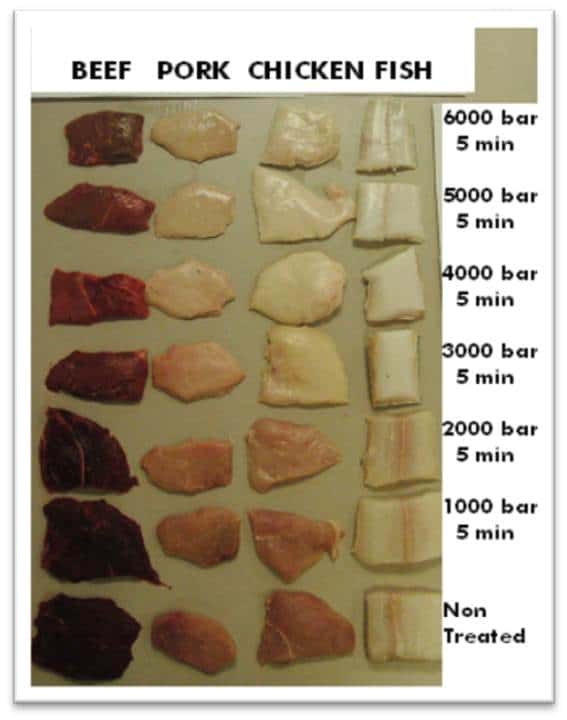 Photo: changes of fresh meat under HPP
Photo: changes of fresh meat under HPP
Such changes in appearance and texture of the meat pose a big challenge when it comes to marketing HPP “raw” meat. Consumers, in general, will find hard to understand if that differently processed meat is marketed as fresh-like. Why is it so pale? How come can it last that long? Etc
Despite this historical limitation of high pressure technology, several innovators have used HPP in new value propositions.
Campofrío in Spain, for example, developed and marketed “Ready-to-Finalise” turkey and chicken breasts in a marinade. It is a product with long shelf life (35 days), convenient, faster to finalise on the pan or grill because the protein struture had already been transformed in the HPP step.
Photo: Campofrío Vuelta y Vuelta HPP Turkey
DIL, a leading technology center in Germany working extensively on HPP applications, developed a method to substitute the thermal step in some products such as the German onion sausage, or the liver sausage, with an HPP step. Yes the sausage could be paler, but more nutritious, faster to manufacture an with important savings in energy. As for the liver sausage, the spreadability was improved, and the liver flavor profile is avoided when eliminating the thermal treatment and using only HPP.
Check out this explanatory video:
Cargill, leading multinational in the protein business (amongst other food segments) has worked very hard to develop HPP beef patties with extended shelf life and increased safety: The Fressure burgers, for foodservice application. In this case, it’s probably easier to explain the chefs and the operators why that pattie is different… but also, why it’s more convenient (refrigerated vs. frozen), safer, and knowing that the final result, once grilled, is all good the same.
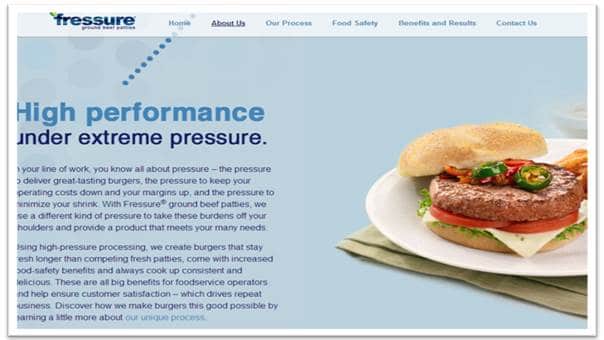
Image: Cargill’s Fressure website
Other interesting developments for fresh meat are being worked in Australia by CSIRO-Food Science Australia and the Meat and Livestock Commission there, as well as by Hormel, a leading American meat corporation, for applications of HPP as a slaughterhouse intervention. The objective: using relatively low pressures, literature suggests that meat cuts can be tenderised, and even better, as a pre-rigor mortis step, glycolisis can be inhibited – hence preventing the hardening and acification of fresh meat after slaughtering.
In conclusion, there are several challenges and limitations when it comes to implementation of HPP technology in fresh meat. But also very interesting potentialities and even current truly innovative applications!!


